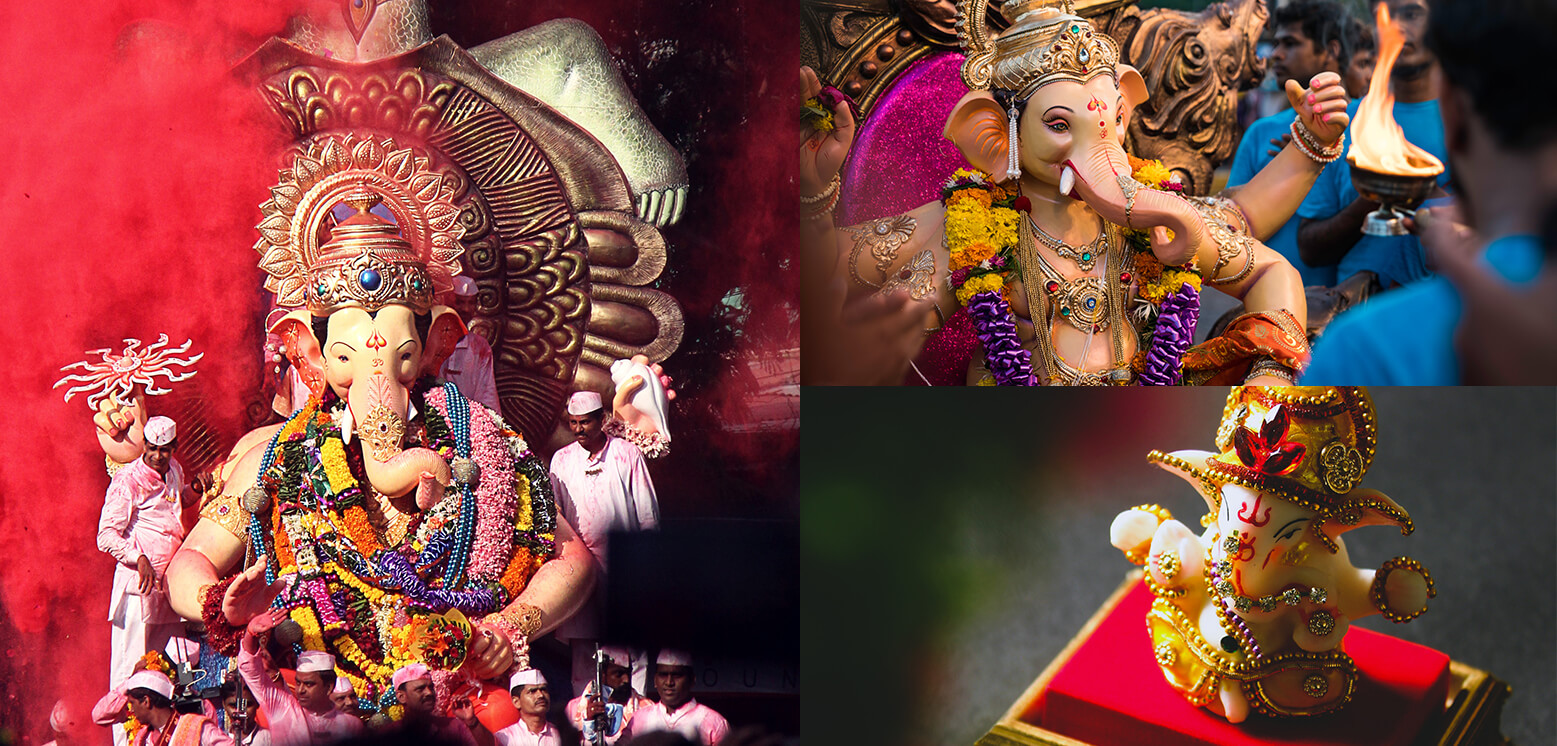
At the Elephanta caves built around 2 BC, the idols of Shiva, Parvati and their first-born Kartikeya stand in the sanctum, but Ganesha – the other son -stands outside. His elephant head diminishes his stature, keeps him separate from the divine family. He was always a ‘smaller’ god, literally with a smaller idol, usually on the entrance of the inner sanctum.
From that, his journey as the most popular and widely followed god in India today is quite extraordinary. Ganesha today appears in many forms. No longer defined by his potbelly, he is often a six-pack wielding warrior or action hero. His stance is aggressive, his gaze is powerful. He strikes the pose of rulers such as Shivaji, of Gods like Vishnu or Krishna and leaders like Ambedkar.
The many Ganesha myths show him as clever and quick-witted, a seeker of short-cuts who circled his parents (who were his world) when asked to circle the earth, while his brother Kartikeya took the long road. Also a trifle greedy, he is the potbellied God whose excessive love for modakas resulted in his stomach bursting due to over-eating. His form of exercise was to ride atop his vehilcle – a rat. He is the remover of all obstacles and was the scribe for writing the Mahabharata as Ved Vyasa dictates it. This jugaad seeking god, who legitimizes the wanting of more is a reflection of our times.
Vishnu and his many forms – still have the maximum number of temples in India. Vishnu stands for the preservation of a world order, a value no longer desired by an impatient India hungry for change. Change in power structures, change in social values and change in ways of being. The start-up brigade is looking to disrupt old ways of business. Popular culture reflects the the rise of ‘every man heroes’ that don’t play themselves but are versatile and continuously changing, depicting real life stories. No longer are there superstars who played themselves film after film. We have become seekers of the new, old brand loyalties are giving way to experimenting and looking for new experiences.
Our gods today are no longer on a pedestal who we worship from afar. Our Gods today are ones we can walk with, and who open a path for us. Sachin Tendulkar – the God of cricket was inaccessible, and little about his private life was known. Virat Kohli on the other hand, instagrams his daily regime and shares what he eats for breakfast as well as how he celebrates his anniversary.
The Ganesha immersion procession has devotees not prostrating in servile worship, rather it has them walking or dancing with the idol, as you would with a friend. We celebrate him, rather than worship him. In a world of changing values where codes of abundance today stand for bingeing, where steadfastness has given way to versatility and intelligence has given way to cleverness, Ganesha is the god of our times. A god who understands us.